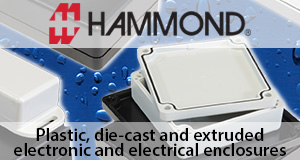The global Automotive Hypervisor market size is projected to reach USD 1193.7 million by 2028, from USD 224 million in 2021, at a CAGR of 26.5% during 2022-2028
Major Factors Driving The Growth Of The Automotive Hypervisor Market
The increased demand for cutting-edge features across all vehicle classes will give OEMs the chance to diversify their revenue sources and broaden their geographic reach. This factor will fuel the growth of the Automotive Hypervisor market.
The development of the world wide automotive hypervisor market is supplemented by elements including the development of connected infrastructure, the acceptance of ADAS features in automobiles, and the introduction of novel technologies for advanced user interface (UI).
TRENDS INFLUENCING THE AUTOMOTIVE HYPERVISOR MARKET
In the development of autonomous vehicles and mobility services, hypervisor technology is anticipated to be essential. The ADAS system has already shown itself to be reliable, and new, improved versions are constantly being released. Demand in the hypervisor market is anticipated to increase as a result of the increased penetration of V2V and V2I features. Many businesses are making significant investments in the creation of autonomous and semi-autonomous technologies.
The focus of automotive stakeholders has shifted decisively to autonomous vehicles. Currently, a car has a range of electrical parts that allow it to sense its surroundings and communicate with objects outside of it. The entire communication process with outside parties has highlighted the requirement to produce a sizable amount of data, which is helpful in implementing machine learning with algorithms in the vehicle’s computer system. The development of autonomous vehicles is anticipated to be made possible in this way by OEMs, Tier I automotive suppliers, and non-automotive entities. Therefore, the implementation of AI and the creation of semi-autonomous and autonomous vehicles depend on a solid automotive-embedded hypervisor system. This factor is expected to drive the growth of the Automotive Hypervisor market.
The user interface is an interactive platform that serves as a conduit for communication between the user and the application. Innovative technology like visual info-gratification, including digital speedometers, climate control, navigation, driving assistance, and other car settings, are being added to new vehicles. On the dashboard of the car, there is a touchscreen display that provides access to these digital info-graphics systems. Leading automotive businesses are also enhancing the user interface (UI) inside the next generation of vehicles by adding digital screens and human interfaces to the interior of a car in order to provide consumers with the same digital human experience. These interfaces necessitate software for technological fusion, which in turn propels the expansion of the automotive hypervisor market.
The Internet of Things (IoT) is being embraced swiftly, which is causing the transportation infrastructure around the world to change quickly. Digital systems have been developed by businesses like Cisco and IBM that can automate traffic lights, enhance waste pickup, and improve surveillance. Intelligent city lights and autonomous vehicles can work together to enable free-flowing traffic. As ITS corridors offer connecting services and enable communication between vehicles and infrastructure (V2I), facilitating traffic flow, they are also one of the growth causes for autonomous vehicles. Therefore, it is anticipated that the development of connected infrastructure will increase demand for advanced vehicles and consequently propel the automotive hypervisor market.
AUTOMOTIVE HYPERVISOR MARKET SHARE ANALYSIS
The segment of luxury vehicles is projected to grow at the fastest rate. Since the cost of developing a hypervisor is always higher, it is mostly used in luxury cars. The advanced safety, comfort, and convenience features on luxury vehicles make their embedded technology more complex and have higher hardware content.
During the forecast period, type 1 is expected to grow at the fastest rate worldwide. Global automakers have a high demand for Type 1 hypervisors, making them the most popular virtualized technology. Type 1 hypervisors run directly on hardware and are highly secure. The risk of attacks that target security flaws is reduced by virtualization.
By 2026, the automotive hypervisor market is anticipated to be the largest in the Asia Pacific region. Some of the world’s fastest-growing economies, including China and India, are found in this region. Because of the region’s high demand for vehicles caused by rising consumer purchasing power, the Asia Pacific region is the world’s largest market for automobiles.
Market By Region
- North America
- Europe
- Asia-Pacific
- Latin America
- Middle East & Africa
Key players
- Mentor Graphics
- Green Hills Software
- Windriver System
- Blackberry
- Renesas
- Sasken
- Continental AG
- Visteon
- NXP















